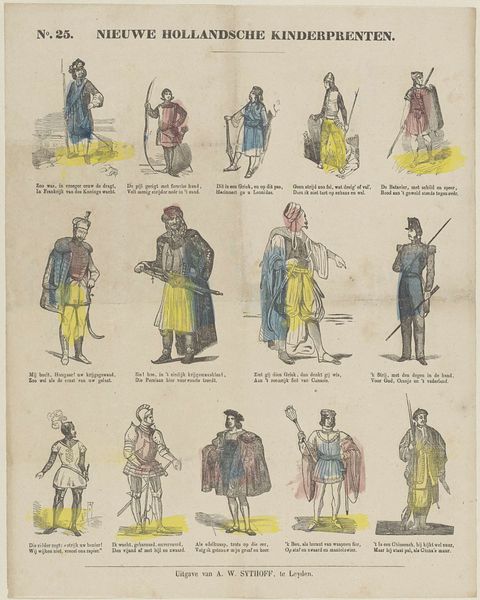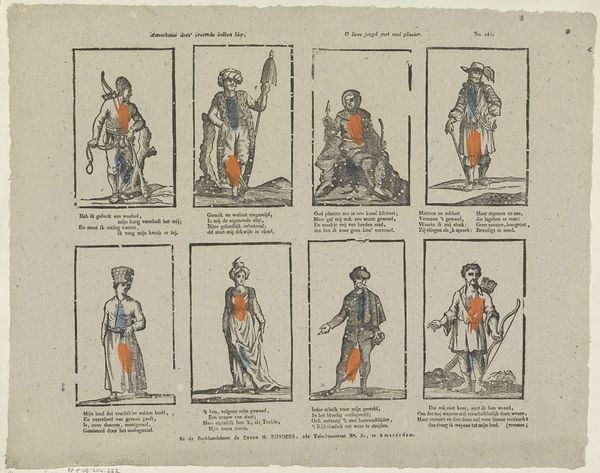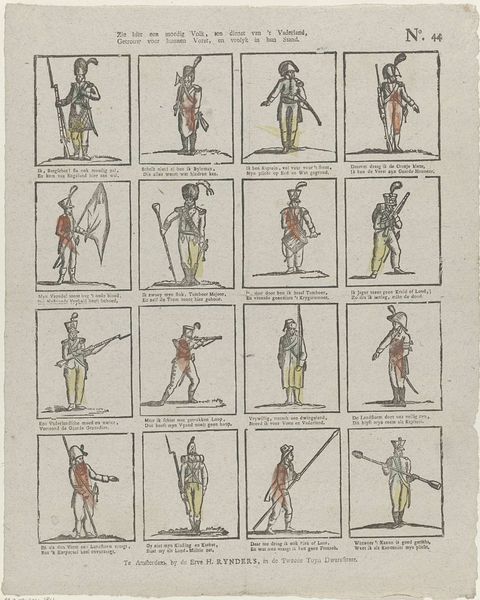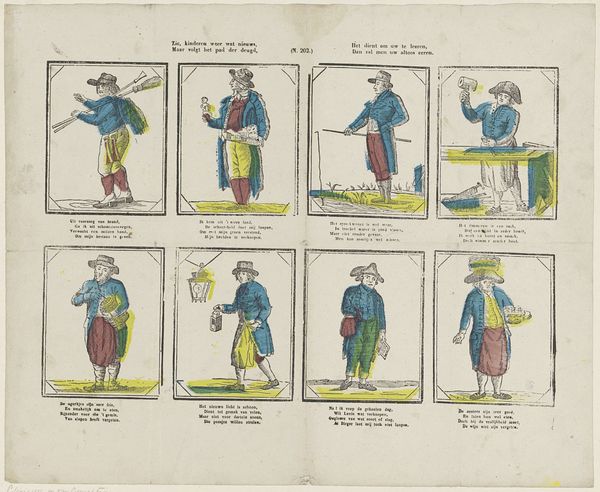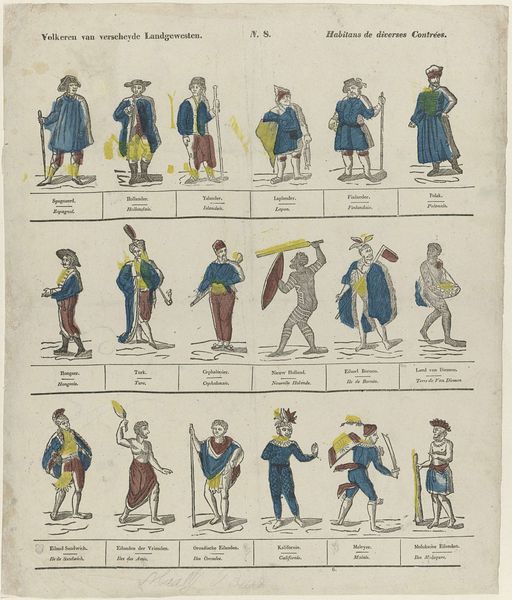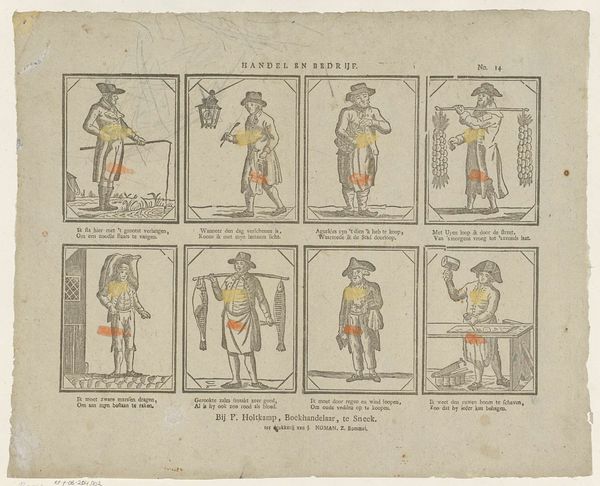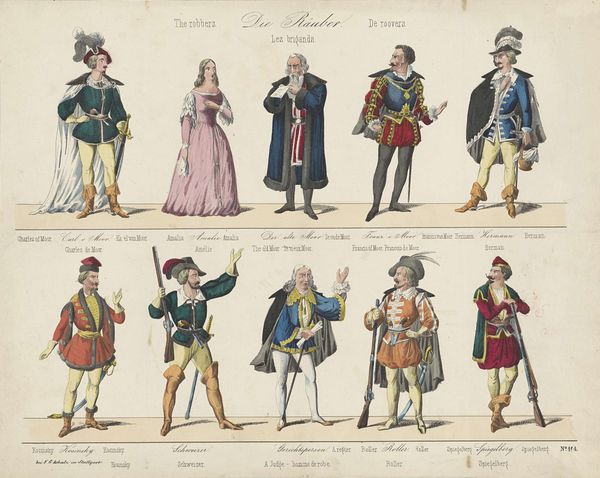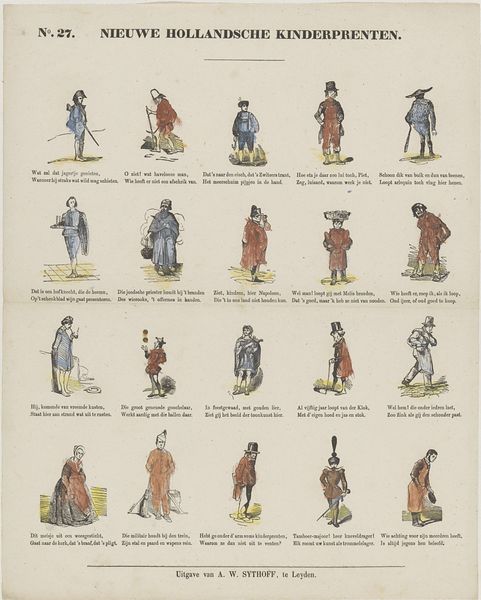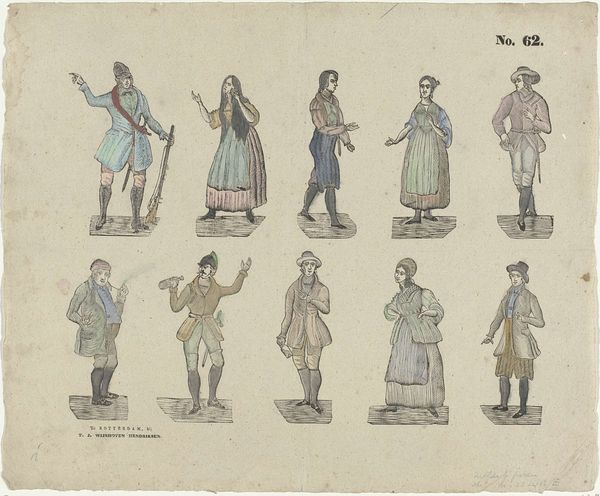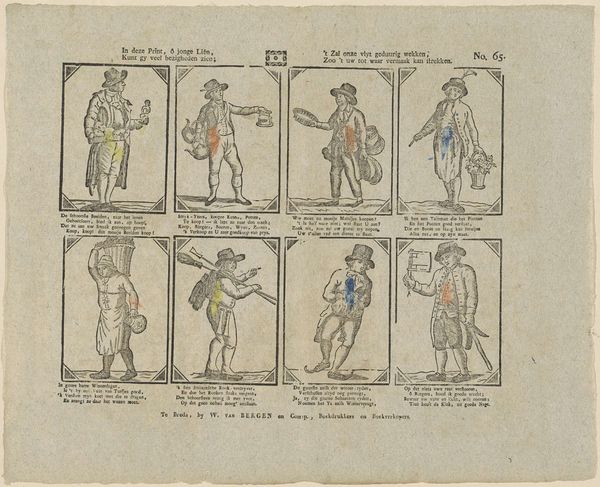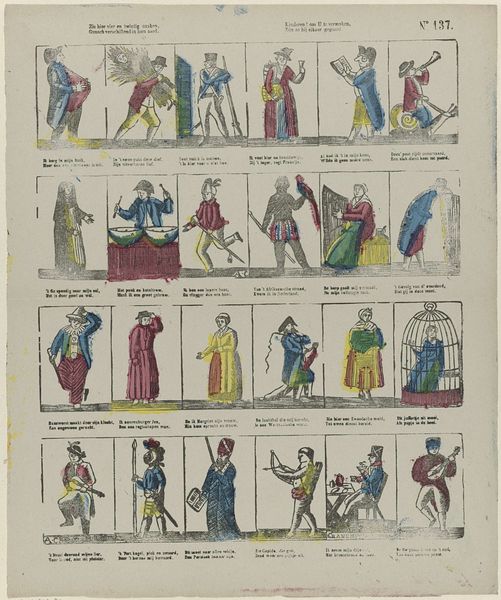
Geen held, zoo dapper, kloek en groot / Of wenscht zich eenen bondgenoot (...) 1828 - 1913
0:00
0:00
print, engraving
#
imaginative character sketch
#
quirky sketch
# print
#
sketch book
#
personal sketchbook
#
idea generation sketch
#
sketchwork
#
sketchbook drawing
#
history-painting
#
storyboard and sketchbook work
#
fashion sketch
#
sketchbook art
#
engraving
Dimensions: height 320 mm, width 429 mm
Copyright: Rijks Museum: Open Domain
Curator: This print, entitled "Geen held, zoo dapper, kloek en groot / Of wenscht zich eenen bondgenoot (...)", which translates to "No hero, so brave, bold and great / Or wishes for an ally (...)," comes to us from Erve Wijsmuller and is dated between 1828 and 1913. It resides here at the Rijksmuseum. Editor: My first impression is a sort of charming rigidity. The figures are arranged like paper dolls, each confined to its own small stage. It has an almost naive quality that is appealing. Curator: The work is a print—an engraving to be exact—which situates it within a broader context of mass communication. Consider how these images of soldiers would circulate, shaping public opinion about national identity and perhaps even militarism during that period. We have to consider who controlled the narrative. Editor: I am drawn to the details of the uniforms. Each figure is slightly different, and it invites a comparative reading. It highlights an awareness of visual signs—how even minor variations in clothing could denote status, allegiance, and personal narrative. What might these signifying features suggest about Dutch society in this time? Curator: Well, the historical context is crucial. This was a time of great upheaval across Europe, with the Napoleonic Wars fresh in memory and new national identities solidifying. Images like this likely played a role in promoting patriotism and, of course, loyalty to the crown and military. Perhaps even justifying military spending? Editor: I also notice how neatly the figures are contained within their frames, creating an effect almost like specimens under glass. Do these enclosures signal, perhaps, social rigidity? The lines also feel like symbolic constraints—a lack of freedom of expression among the people perhaps? Curator: I agree. The constraints speak to larger social forces. These were hierarchical times and societies were not ready to welcome difference; images played a role in establishing social boundaries. Perhaps there's something profoundly melancholy, too, about these soldiers and their roles within it all. Editor: Yes, this melancholy hints at something unresolved, a sort of tension in the representation of military heroism that complicates the ostensibly patriotic message. It becomes a layered and thought-provoking visual experience. Curator: Absolutely. Seeing it through that lens really changes its whole impact. Editor: Indeed. A fresh perspective shifts the emotional resonance of the work.
Comments
No comments
Be the first to comment and join the conversation on the ultimate creative platform.
